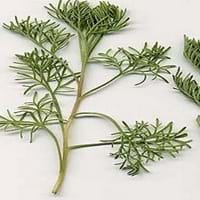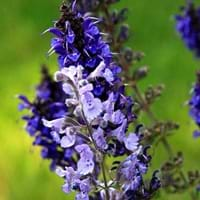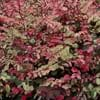Life Span
Perennial
Perennial
Origin
Southern Europe
Hybrid origin
Types
not available
not available
Habitat
Temperate Regions
Alpine Meadows, shaded woods, Shady Edge
USDA Hardiness Zone
5-8
4-8
Sunset Zone
2b, 3a, 3b, 4, 5, 6, 7, 8, 9, 10, 11, 12, 13, 14, 15, 16, 17, 18, 19, 20, 21, 22, 23, 24
1a, 1b, 2a, 2b, 3a, 3b, 4, 5, 6, 7, 8, 9, 10, 11, 12, 13, 14, 15, 16, 17, 18, 19, 20, 21, 22, 23, 24
Habit
Upright/Erect
Cushion/Mound-forming
Minimum Height
Not Available
Minimum Width
Not Available
Flower Color
Yellow, Gray
Lavender, Blue Violet
Flower Color Modifier
Not Available
Bicolor
Fruit Color
Non Fruiting Plant
Not Available
Leaf Color in Spring
Gray Green
Light Green, Gray Green
Leaf Color in Summer
Gray Green
Light Green, Gray Green
Leaf Color in Fall
Gray Green
Light Green, Gray Green
Leaf Color in Winter
Not Available
Light Green
Leaf Shape
Long hair-like leaves
Pinnate
Plant Season
Spring, Summer, Fall
Spring, Summer, Fall
Sunlight
Full Sun
Full Sun, Partial Sun, Partial shade
Type of Soil
Loam
Loam, Sand
The pH of Soil
Neutral
Neutral
Soil Drainage
Well drained
Well drained
Bloom Time
Late Summer
Late Spring, Early Summer, Summer, Late Summer, Early Fall
Tolerances
Not Available
Drought
Where to Plant?
Ground, Pot
Container, Ground
How to Plant?
Cuttings, Seedlings
Cuttings, reseeds, Runners
Plant Maintenance
Medium
Medium
Watering Requirements
Average Water Needs, Keep the Soil well drained
Average Water Needs, Keep the Soil well drained
In Summer
Lots of watering
Lots of watering
In Spring
Moderate
Moderate
In Winter
Average Water
Average Water
Soil Type
Loam
Loam, Sand
Soil Drainage Capacity
Well drained
Well drained
Sun Exposure
Full Sun
Full Sun, Partial Sun, Partial shade
Pruning
Cut back old stems to the ground, Remove damaged leaves, Remove dead branches, Remove dead leaves
Remove damaged leaves, Remove dead branches, Remove dead leaves
Fertilizers
All-Purpose Liquid Fertilizer, Complete balanced fertilizer
All-Purpose Liquid Fertilizer
Pests and Diseases
Free of serious pests and diseases
Red blotch
Plant Tolerance
Drought
Drought
Flowers
Insignificant
Yes
Flower Petal Number
Not Available
Single
Fragrant Bark/Stem
No
Yes
Foliage Texture
Medium
Medium
Foliage Sheen
Matte
Matte
Attracts
Not Available
Bees, Butterflies, Hummingbirds
Allergy
Skin irritation
Anaesthesia, Irritation to urinary tract
Aesthetic Uses
Farmland, small hedge, Wild gardens
Beautification, Landscape Designing, Showy Purposes
Beauty Benefits
Not Available
Not Available
Environmental Uses
Air purification
Air purification
Medicinal Uses
Antiseptic, Digestive, Liver problems, Skin Disorders, Tonic
Cough, Menstrual Disorders, Nerve pain
Part of Plant Used
Branch, Fibres, Flower Stalk, Gum, Leaves, Twigs
Leaves
Other Uses
Oil is used in mosquito repellents, Used for fragrance, Used to make hair tonic
Can be made into a herbal tea, Oil is used in mosquito repellents
Used As Indoor Plant
No
Yes
Used As Outdoor Plant
Yes
Yes
Garden Design
Herb, Vegetable, Mixed Border, Rock Garden, Wall
Container, Groundcover, Mixed Border, Rock Garden, Wall
Botanical Name
ARTEMISIA abrotanum
NEPETA mussinii
Common Name
lad's love , southern wormwood , old man , boy's love , appleringie , sitherwood
Catmint
In Hindi
southernwood
कटमींट
In German
Eberraute
Katzenminze
In French
aurone ou citronnelle
Catmint
In Spanish
Artemisia abrotanum
catmint
In Greek
Artemisia abrotanum
catmint
In Portuguese
Abrótano
nêveda
In Polish
Bylica boże drzewko
catmint
In Latin
Southernwood
nepetae mixtam
Phylum
Magnoliophyta
Magnoliophyta
Class
Magnoliopsida
Magnoliopsida
Family
Asteraceae
Lamiaceae
Clade
Angiosperms, Asterids, Eudicots
Angiosperms, Eudicots
Tribe
Anthemideae
Nepeteae
Subfamily
Asteroideae
Not Available
Number of Species
Not Available
Not Available
Season and Care of Southernwood and Walkers Low Catmint
Season and care of Southernwood and Walkers Low Catmint is important to know. While considering everything about Southernwood and Walkers Low Catmint Care, growing season is an essential factor. Southernwood season is Spring, Summer and Fall and Walkers Low Catmint season is Spring, Summer and Fall. The type of soil for Southernwood is Loam and for Walkers Low Catmint is Loam, Sand while the PH of soil for Southernwood is Neutral and for Walkers Low Catmint is Neutral.
Southernwood and Walkers Low Catmint Physical Information
Southernwood and Walkers Low Catmint physical information is very important for comparison. Southernwood height is Not Available and width Not Available whereas Walkers Low Catmint height is 38.10 cm and width 45.70 cm. The color specification of Southernwood and Walkers Low Catmint are as follows:
Southernwood flower color: Yellow and Gray
Southernwood leaf color: Gray Green
Walkers Low Catmint flower color: Lavender and Blue Violet
- Walkers Low Catmint leaf color: Light Green and Gray Green
Care of Southernwood and Walkers Low Catmint
Care of Southernwood and Walkers Low Catmint include pruning, fertilizers, watering etc. Southernwood pruning is done Cut back old stems to the ground, Remove damaged leaves, Remove dead branches and Remove dead leaves and Walkers Low Catmint pruning is done Remove damaged leaves, Remove dead branches and Remove dead leaves. In summer Southernwood needs Lots of watering and in winter, it needs Average Water. Whereas, in summer Walkers Low Catmint needs Lots of watering and in winter, it needs Average Water.





